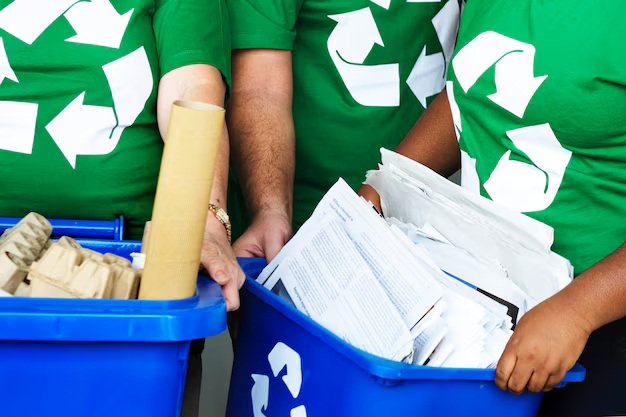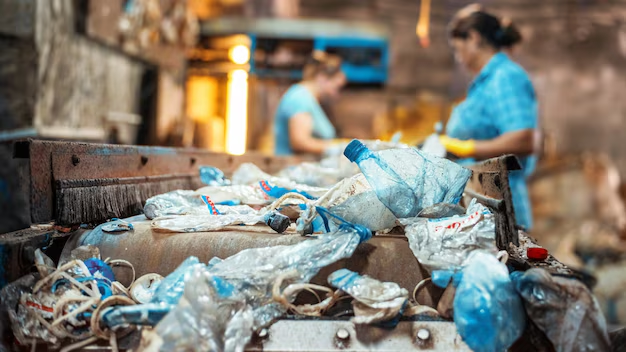Paper is not immortal. Every time paper is turned back into pulp and made into new sheets, the tiny cellulose fibres that give paper its strength get shorter and stiffer. That limits how many “loops” a single fibre can survive. According to the U.S. Environmental Protection Agency, recycled paper fibres typically can be reused about five to seven times before they become too short to form strong new paper on their own. New (virgin) fibre is added to the mix so mills can preserve strength and make high-quality products.

In This Article
- Why Fibres Wear Out: The Science Behind the Limit
- Real Recycling: Case studies, People and Recent Research
- What this Means for Consumers, Industry and Policy
- Conclusion
Why Fibres Wear Out: The Science Behind the Limit
At a microscopic level, the story is simple and well-documented: wood-based paper is made mostly of long cellulose fibres. During the first papermaking cycle, these fibres are dried, bonded and shaped. When that paper is later pulped for recycling, the drying and re-wetting cycles change fibre structure — the process scientists call “hornification” — and mechanical processing physically shortens the fibres and creates fines (very small fragments). Over repeated cycles, the population of long, flexible fibres shrinks and bonding ability drops, so paper made from heavily recycled pulp is weaker and less able to hold ink, fold cleanly, or be formed into high-grade papers. This mechanism has been measured and described in industry and academic work going back decades. For example, research by the USDA Forest Products Laboratory showed that strength loss is driven by reduced interfiber bonding after drying and reprocessing.
Recent laboratory and modelling studies confirm that the precise number of useful recycle loops depends on the original paper type and how it’s processed. Long-fibre pulps (for example, softwood kraft used in packaging) tolerate more cycles than short-fibre grades (like some printing papers). Process choices — how thoroughly the pulp is deinked, whether mechanical refining is used, and whether mills add strength agents or virgin fibre — change the outcome. A recent materials-science review and engineering studies find measurable strength and yield losses from repeated recycle loops, and they show those losses vary by pulp type and mill process. In short: five to seven loops is a useful, evidence-backed rule of thumb, not a fixed law for every sheet.
Learn More: Can You Recycle Old Notebook Paper?
Real Recycling: Case studies, People and Recent Research
On the factory floor and at the recycling depot, the five-to-seven-figure is a practical reality. Industry groups and mills routinely plan supply and quality by assuming recycled fibre will need a top-up with virgin fibre. According to the American Forest & Paper Association, recycled fibres are typically reused five to seven times in new paper and cardboard products—this is the operating assumption behind many mill designs and recycling programs.
Here are three real-world snapshots that explain how that rule shows up in practice.
First, a mill-level view: International Paper and other large manufacturers write and publish case studies showing they combine recovered fibre and responsibly sourced virgin fibre to meet quality and supply needs. Their published white papers describe routing recovered fibre from collection through deinking and pulping to the final product, and stress that fresh fibre keeps the paper loop healthy for long-life products. Those industry accounts show why investment in recycling machinery and consistent feedstock is as important as the “number of times” metric.
Second, a community and infrastructure story: when a new, modern sorting and processing facility opens, it changes what can be recycled and how clean the feedstock is. According to The Herald Sun, the Spreyton materials recovery facility in Tasmania — a recent, publicised MRF investment — is one example of local infrastructure that raised the region’s ability to recover paper cleanly and return better-quality fibre to mills. Managers at such sites say that cleaner input streams reduce contamination and allow mills to get more usable fibre from each ton collected. Cleaner fibre means mills can push recycled fibre further before strength problems force in more virgin fibre.
Third, small-scale innovation: a 2024–2025 string of academic and applied studies has explored on-site recycling at print shops and closed-loop cardboard production for packaging. One MDPI study looked at on-site recycling at printing houses and found that tailored, segregated recycling loops — where one type of paper is recycled back into one product type — can preserve fibre quality better than mixed streams. Those experiments matter because they show that design choices at the source (how waste paper is collected and sorted) influence how many useful cycles fibres can survive.
People in those systems notice the limits. Mill engineers and recycling managers track fibre yield, the percent of usable fibres after deinking, and product strength tests. When yields fall, managers add virgin pulp or divert recycled pulp into lower-grade uses such as tissue or boxboard, where shorter fibres are acceptable. That adjustment — moving material to an appropriate next life rather than insisting on direct replacement of the original product — is how the industry keeps recycled fibre in the loop for as long as it’s useful. Research and industry reports document both the technical limits and the operational responses.

What this Means for Consumers, Industry and Policy
For consumers: recycling paper is still a high-impact action. Recycled fibre reduces demand for virgin timber and lowers water and energy use in many life-cycle analyses. Recycling one ton of paper saves significant resources compared with making new paper from trees; different sources quote varying numbers for “trees saved” depending on tree size and the product mix, but the environmental benefit is consistent when recycling is done properly. If you want to get the most value from recycling, keep paper dry and clean, avoid putting greasy pizza boxes in curbside bins (compost if available), and follow local guidance on shredded paper and mixed materials. Clean, single-stream paper of one grade gets recycled into better products and can stay in the loop longer.
For industry: the five-to-seven guideline means mills must plan for a steady stream of virgin fibre even in a circular system. That’s why many companies are investing heavily in sorting, deinking, and fibre-restoring technologies — along with infrastructure to keep recovered fibre pure and segregated when needed. Investments of billions in manufacturing and recycling infrastructure in recent years reflect that reality: better equipment and tighter supply chains increase the amount of good fibre mills can extract from collected paper. That investment also helps avoid downcycling — shifting paper into low-value uses prematurely — and keeps more material in higher-value loops when possible.
For policy: the technical limit on loops argues for a policy that attends to the whole chain, not just collection rates. Regulations and incentives that support better collection (less contamination), improved MRFs, and support for mills to adopt stronger deinking and fibre-restoration methods deliver bigger climate and resource benefits than policies that only push for higher nominal recycling rates without addressing quality. Also, policies encouraging design-for-recycling — for example, labelling, standardised inks and coatings, and packaging choices that keep fibres long and clean — let fibres be recycled more times in practice. Industry guidance and regulatory design documents have begun to emphasise these system-level fixes.
Actionable Takeaways
For individuals: recycle the clean paper you generate, reduce unnecessary printing, and favour products that state they use recycled content. When in doubt, check local rules — many facilities reject heavily contaminated or mixed-material paper and cardboard.
For businesses: segregate paper streams when possible (e.g., keep office paper separate from wet food-soiled packaging), invest in staff training so contamination is reduced, and work with suppliers to buy recycled-content paper to close the loop.
For policymakers and planners: prioritise funding for MRF upgrades and market development for recycled fibre, support standards for design-for-recycling, and align procurement policies to reward higher recycled content when supply chains can meet quality needs.
Conclusion
paper fibres age and wear, and the widely accepted engineering answer is that, depending on grade and processing, a fibre can be profitably recycled about five to seven times before it needs replacement with virgin fibre. That limit does not make recycling futile — far from it. Instead, it clarifies where effort pays off: cleaner collection, smarter sorting, investment in deinking and restoration, and better product design extend the usefulness of every recovered ton. The science and the industry both point to practical, scalable ways to keep paper in the circular economy for as long as it works — and to treat the limits as a design parameter, not a reason to stop recycling.







